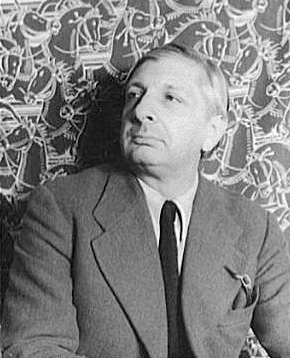
Giorgio de Chirico
Italian artist Giorgio de Chirico is renowned for his paintings depicting classical piazzas inhabited by spectral figures and shadows, which were characterized by an atmosphere of melancholy and uneasy menace, captivated the French avant-garde during the 1910s and went on to inspire the Surrealists in later years.
Biography of Giorgio de Chirico
The artist was born in Volos, Greece, to Italian parents. Giorgio de Chirico's father was an engineer involved in constructing the Greek railway system, and his mother was a noblewoman of Genoese descent. Supported by his parents in his artistic pursuits, he developed a keen interest in Greek mythology from a young age. Additionally, the artist faced intestinal disorders in his youth, which some speculate contributed to his melancholic perspective.
Between 1903 and 1905, he attended the Higher School of Fine Arts in Athens. After his father died in 1905, the family traveled to Florence and later settled in Munich the following year. Enrolling at the Academy of Fine Arts, de Chirico delved into the works of Symbolist artists such as Max Klinger and, notably, the Swiss painter Arnold Böcklin.
In March 1910, he left Munich without completing his studies to rejoin his family in Milan. Subsequently, he relocated to Florence and, influenced by Italian writer Giovanni Papini, began studying German philosophers like Friedrich Nietzsche, Arthur Schopenhauer, and Otto Weininger. De Chirico sought to connect their ideas to his art, aspiring to transcend the mundane aspects of daily life and unveil the concealed reality he believed existed beneath the surface.
In July 1911, de Chirico and his mother relocated to Paris to join his brother, making a stop in Turin along the way. His fascination with Turin stemmed from its association with Nietzsche's initial signs of madness in 1889. The city's architecture, characterized by piazzas and archways, left a profound impression on him, evident in numerous paintings from this period.
In May 1915, de Chirico and his brother were conscripted into the Italian army for World War I, stationed in Ferrara. Despite the wartime circumstances, de Chirico continued to paint, incorporating the arcades and shop windows of Ferrara into his paintings.
In 1917, a nervous condition led de Chirico to an Italian hospital, where he continued to create art, focusing on cluttered interiors in the Metaphysical style. During his hospital stay, he crossed paths with Carlo Carrà, and from their exchanges emerged Metaphysical art or "pittura metafisica." Early in 1919, de Chirico held his inaugural solo exhibition at the Galleria Bragaglia in Rome.
In 1924, the artist contributed designs for a ballet in Paris based on a short story by Italian dramatist Luigi Pirandello. His involvement extended to creating lithographs for a reproduction of Guillaume Apollinaire's book of poems, "Calligrammes," in 1929. That same year, he authored his only novel, "Hebdomeros," a dream-like collection of impressions and situations serving as a literary companion to his metaphysical paintings. Although he distanced himself from the Surrealists by this time, "Hebdomeros" is acknowledged as one of the finest examples of Surrealist literature.
De Chirico's similar ventures continued until late in his life. In the late 1960s, he ventured into crafting small bronze sculptures, incorporating figures borrowed from his earlier paintings, including the mannequins from his Ferrara period. Throughout his career, he routinely produced and sold copies of paintings from his Metaphysical period, sometimes passing them off as originals. This practice served both as an attempt to capitalize on the enduring popularity of his early work and as a form of retaliation against critics who praised his initial styles while disparaging his later periods.
While Giorgio de Chirico's career spanned an impressive seventy years, his early metaphysical works stand out as the most significant. Notably, he exerted a profound influence on the Surrealists, with André Breton considering him a primary torchbearer of a new modern mythology. Despite later referring to Surrealists as "the leaders of modernistic imbecility," the artist continued to inspire subsequent French avant-garde groups like the Lettrists and Situationists, particularly in their exploration of urbanism. These groups viewed de Chirico not only as a painter but also as an architect, interpreting his enigmatic piazzas and towers as visions and blueprints for future cities.
Giorgio de Chirico's Art Style
Giorgio de Chirico's paintings consistently explored historical, mythological, and philosophical themes. The inception of his Metaphysical Town Square series commenced with "Enigma of an Autumn Afternoon" (1909) in Florence. From 1909 to 1919, this series featured recurring motifs of memory, loss, mystery, the passage of time, and architectural elements, particularly arches and towers. The settings portrayed desolate and melancholic squares and cityscapes, resembling depopulated Mediterranean cities existing in a time beyond history, where everyday life intertwines with mythology.
Giorgio de Chirico's later artistic phase, spanning from 1919 until his death in 1978, commenced shortly after his inaugural solo exhibition in 1919 and was marked by a transformative revelation at Rome's Galleria Borghese while contemplating a Titian painting. Following this, he penned "The Return of Craftsmanship," advocating for a return to traditional methods and iconography while launching a campaign against modern art. This marked a shift in his approach, as he had previously shown little interest in technique, and his early figurative work revealed a less developed understanding of anatomy. Between 1919 and 1924 in Rome, he actively worked on refining his technique, drawing inspiration from the Old Masters.
Years:
Born in 1888
Country:
Greece, Volos
Gallery:
Galleria d'Arte Maggiore g.am.
Landau Fine Art
Helly Nahmad Gallery